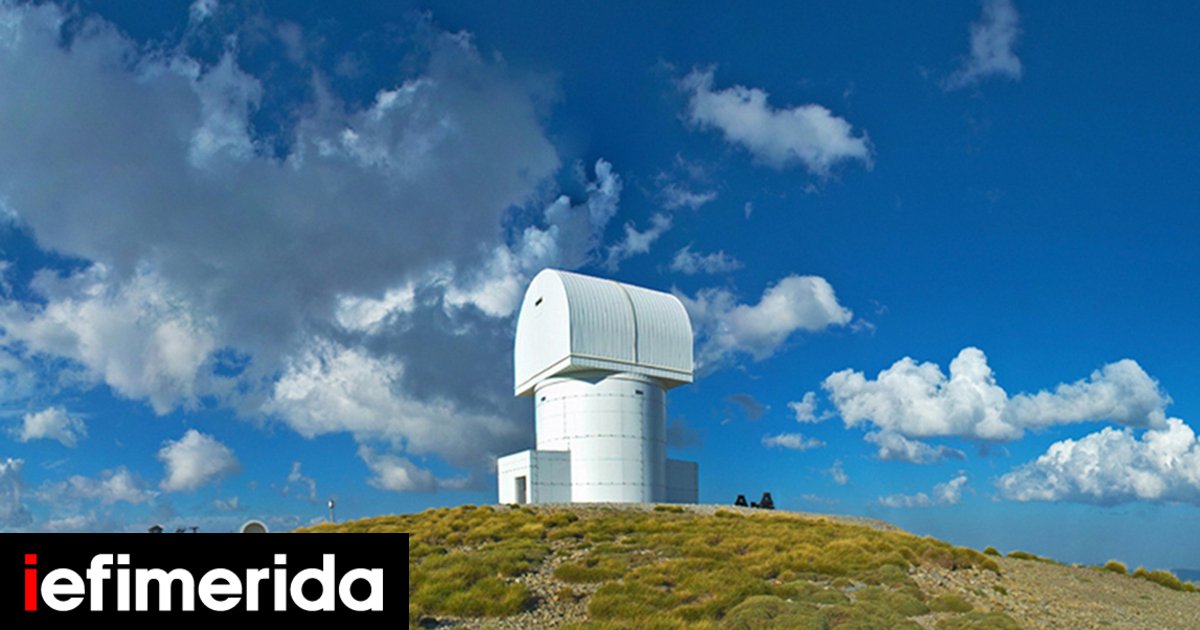
An impressive mission that aims for the first time to achieve communications over vast distances, not by radio waves as happens today, but by new laser optical technology, which NASA is preparing in cooperation with the European Space Agency (European Space Agency).
This optical link will be made by the Psyche spacecraft, which launched yesterday afternoon from the Kennedy Space Center in Florida. The only European telescopes participating in the experiment are from the National Observatory in Athens.
The spacecraft will travel to asteroid 16 Psyche, a metal-rich asteroid more than 300 million kilometers away, about twice the distance between Earth and the Sun. Studying the asteroid can provide useful information about the creation of our planetary system.
Experiment in space with Greek telescopes
The Institute of Astronomy, Astrophysics, Space Applications and Remote Sensing (IAADET) of the National Observatory in Athens is participating in the experiment with its two affiliated observatories in the Peloponnese, the Helmos Observatory, which is the largest ground-based research infrastructure in the country, and the Kryonerio Observatory.
NASA: The spacecraft successfully launched towards the mysterious and rare metallic asteroid Psyche [βίντεο]
Prada goes into space: it will design NASA spacesuits for a mission to the moon
These two are The only European telescopes participating in the mission. This fact, as IAADET Director and Deputy Head of the National Observatory in Athens, Spyros Vassilakos, explains to APE-MPE, “appears in terms of the strategic cooperation between IAADET and the National Observatory in Athens with the European and American Space Commission.” Organizations, and on the other hand, the ability that our scientists have to respond to symbolic tasks, like this one.”
A special receiver will be installed in the Aristarchus telescope of the Helmos Observatory, which will collect the laser beam sent by the Psyche spacecraft.
This telescope in particular is the largest in the Balkans and one of the largest in continental Europe, a fact that, as IAADET Research Director Manolis Zylouris points out, “makes it capable of detecting faint signals coming from distant celestial bodies and from laser beams.” Satellites that have This type of technology. “This is important for communications with space instruments related to closer space missions, such as the Moon, but also far space, such as the mission we are referring to,” Mr. Zeloris adds.
A special laser will be installed at the Kryoneri Observatory, which will send its beam to the Psyche spacecraft. Then, in 2024, special equipment will be placed on Helmos and Cryoneri, while optical links with the remote spacecraft are expected to be established in 2025.
It is important that the technologies to be developed in the context of the implementation of the specified program “will strengthen European scientific and technological capabilities in the field of cybersecurity and optical/quantum technologies, while opening significant development prospects for IAADET through the cooperation already developed in cooperation with important space organizations and aerospace companies.” “, confirms IAADET Director, Spyros Vassilakos.
This cooperation also opens up prospects for investments in this specific sector. “The inclusion of the Aristarchus and Kryoneri telescopes in the Psyche mission is a qualitative leap in the development actions undertaken by IAADET and the National Observatory in Athens, highlighting our national infrastructure as key European pillars in this particular subject. This is a great success, adds Mr. Vassilakos. The strategic cooperation aspect that we have with ESA attracts interest in investments from both Greek and foreign companies operating in this specific sector.”
Before the National Observatory of Athens was included in the Psyche programme, it was preceded by the successful evaluation of the “Aristarchus” telescope in August 2020 by the European Space Agency team for use as the first ground station for laser communication with communications satellites in the world. Framework of the European Space Agency’s Scylight (Secure Communications and Laser Technology) programme. This is the main European program to develop this innovative technology, through which communication between satellites and the Earth will be done through optical lasers, which increases the speed of information transmission from ten to 100 times compared to current technology.
As part of this programme, already in 2021, the Aristarchus telescope has performed repeated pairings with the largest European communications satellite Alphasat, generating new data in the field of new European communications technologies. In essence, through “Aristarchus” an intangible optical fiber was created with the satellite at a distance of about 37 thousand kilometers from Earth, which can transmit data at incredible speeds and in a completely safe way.
IAADET Research Director, Manolis Xeloris, explains that with the completion of the Scylight network architecture “a new horizon in communications will open”, with services such as the development of completely secure communications technologies, telecommunications covering areas with high-speed communications service speeds, and providing services in operations. Search and rescue and in emergency situations such as natural disasters, linkage and integration between satellite systems to the level of linkage achieved today in fixed and mobile terrestrial communications networks.
Source: APE-ME

“Avid problem solver. Extreme social media junkie. Beer buff. Coffee guru. Internet geek. Travel ninja.”





More Stories
In Greece Porsche 911 50th Anniversary – How much does it cost?
PS Plus: With a free Harry Potter game, the new season begins on the service
Sony set to unveil PS5 Pro before holiday season – Playstation